A relaxed breakfast bar can be the hardest-working zone in any kitchen: it’s where morning coffee meets homework hub, where quick bites flow into late-night chats, and where style anchors the whole space without eating square footage. Design writers note that a well-planned breakfast bar adds flexible seating, extra prep room, and a social focal point, whether it hugs a wall or crowns an island. Today’s trends spotlight smart multitasking—hidden storage, tech-charging cubbies, lightweight fold-downs—alongside tactile details like reeded panels and waterfall stone that elevate even tiny flats. Below, explore twenty fresh breakfast bar ideas, each distilled into clear, 100- to 120-word guides so you can mix and match form, function, and personality.
1. Waterfall-Edge Breakfast Bar Elegance
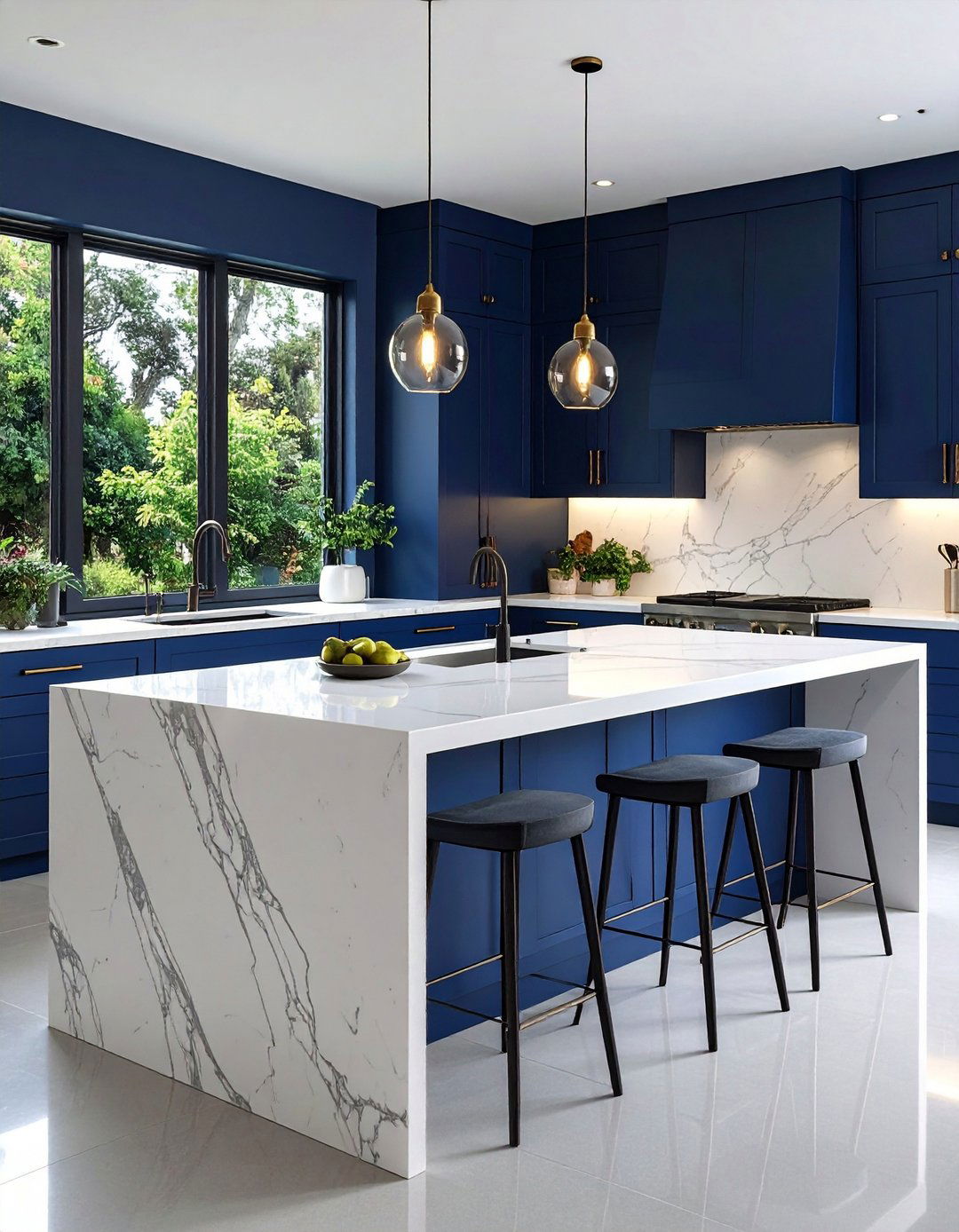
A sleek waterfall counter instantly makes a breakfast bar feel sculptural, as the countertop “falls” down the side for one clean, continuous line. Pick a durable stone or quartz slab and extend it over an island base so stools tuck beneath the overhang. This design keeps crumbs from hiding in joints and visually anchors open-plan rooms. Pair chunky sides with slender leg-room strips to maintain ergonomic seating clearance. Waterfall styles also protect cabinetry corners from daily scuffs—a practical perk for family kitchens. Coordinate the fascia color with lower cabinets, or contrast boldly to highlight the feature. Use soft-close drawers inside to keep the luxe look fuss-free.
2. Space-Saving Wall-Mounted Fold-Down Breakfast Bar
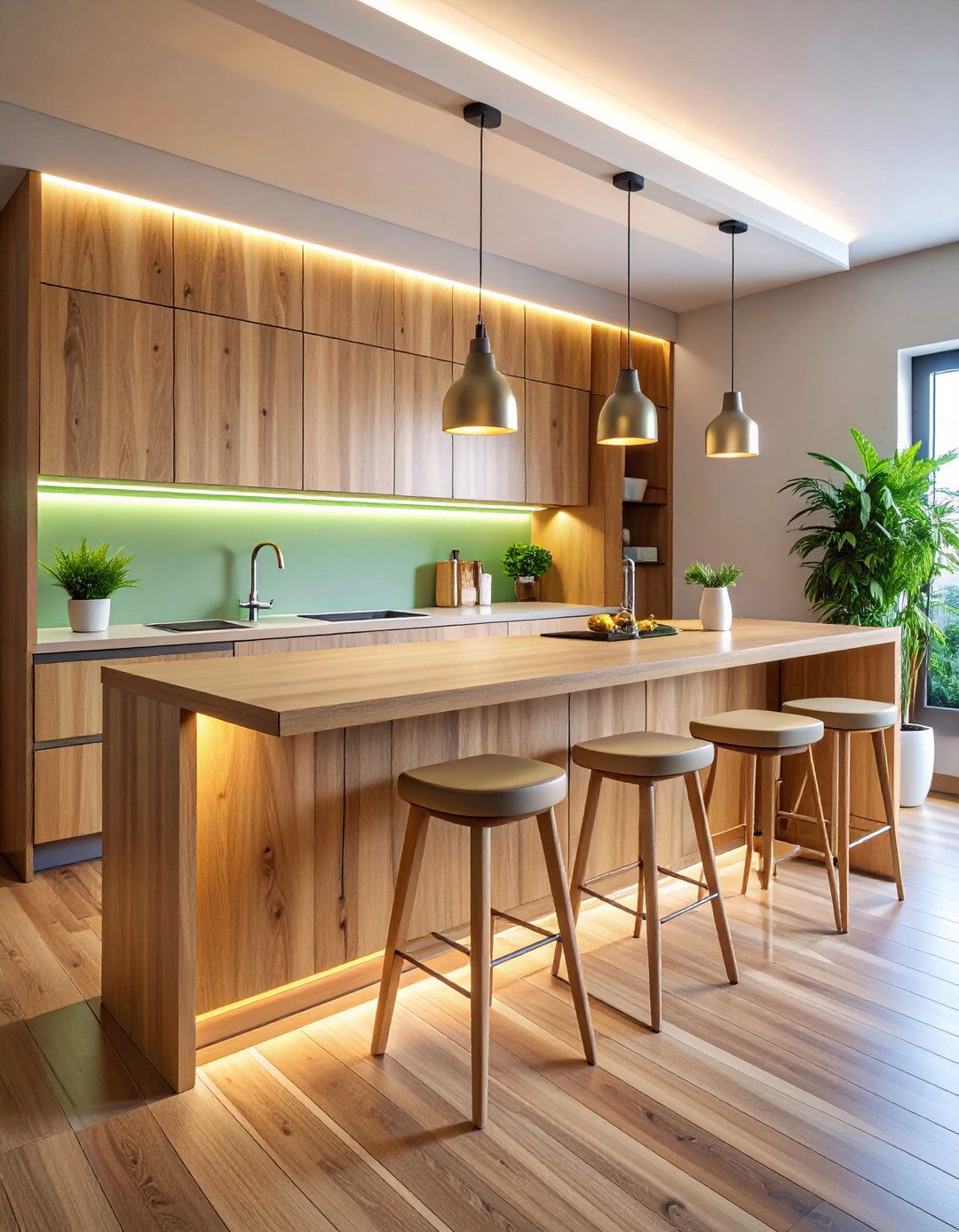
For micro apartments where every inch counts, consider a wall-mounted panel that folds down into a compact breakfast bar. Sturdy hidden brackets carry the load while a simple slide lock keeps the surface flush when stowed. Choose a timber front that doubles as décor, then add a slim LED strip above for task lighting once the bar drops. This approach frees valuable floor space and prevents traffic bottlenecks, yet still offers a 90-cm-deep perch for cereal and laptops. Finish with two nesting stools that slide under shelving nearby so nothing protrudes when the panel is up. Install at traditional counter height (about 90 cm) for universal comfort.
3. Mixed-Material Breakfast Bar Contrast
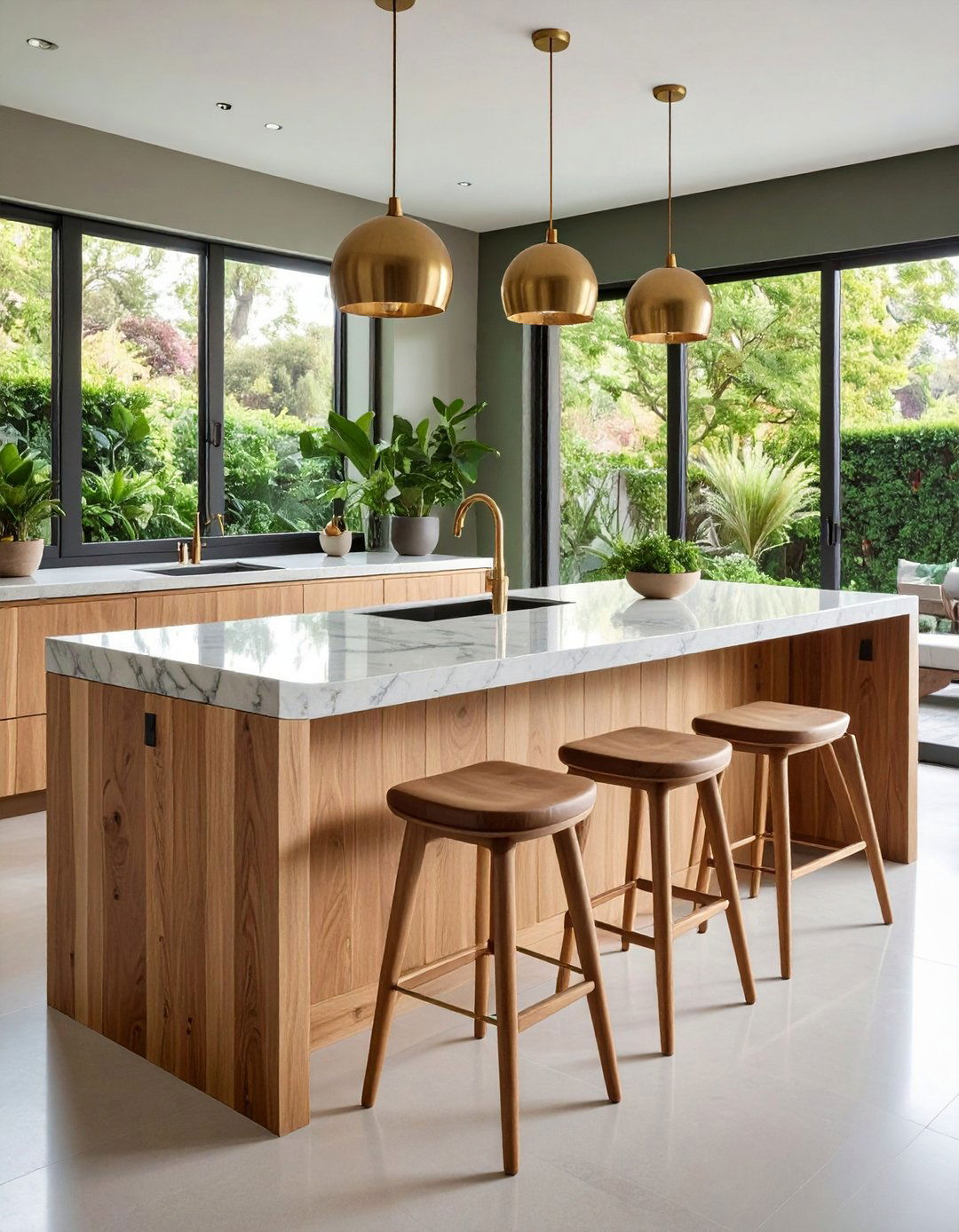
Blending surfaces gives your breakfast bar built-in zoning: a wood butcher-block edge for warm dining plus hard-wearing stone where knife work happens. Use contrasting finishes—say oak against veined quartz—to sharpen definition without constructing two pieces. Align seams over a support panel so loads transfer safely. Adding texture variance not only looks artisanal but can also cut material costs; designers often insert a timber seating ledge to avoid purchasing a second full stone slab. Echo the timber tone on stools for cohesion, and protect it with food-safe oil every few months.
4. Rustic Farmhouse Breakfast Bar Warmth

A rustic breakfast bar evokes weekend farmhouse vibes even in city flats. Opt for reclaimed planks with visible knots, then seal lightly to keep the heritage feel. Chunky turned-leg stools or vintage tractor seats reinforce the rural mood, while open shelving above can host enamel mugs and ceramic pitchers. To modernize, pair the weathered timber with matte-black taps or industrial pendants. Because reclaimed wood is softer than engineered boards, add discreet metal L-brackets beneath the overhang to curb warping over time. Finish with woven seat pads for comfort that still showcases the grain.
5. Industrial Steel-and-Wood Breakfast Bar

Take cues from loft living by combining raw steel frames and thick oak tops for an edgy industrial breakfast bar. Exposed bolts and tension wires double as a foot rail and create visual rhythm. Powder-coat the metal to resist scratches and echo nearby appliances. Forged hairpin legs open floor sightlines, making small kitchens feel larger, while solid timbers ground the look. Add Edison-bulb pendants on black cords to boost workshop chic, and soften with a wool runner so toes stay warm on concrete floors. Monthly wipe-downs with a beeswax compound keep both metal and wood corrosion-free.
6. Peninsula-Style Breakfast Bar for Open Plans
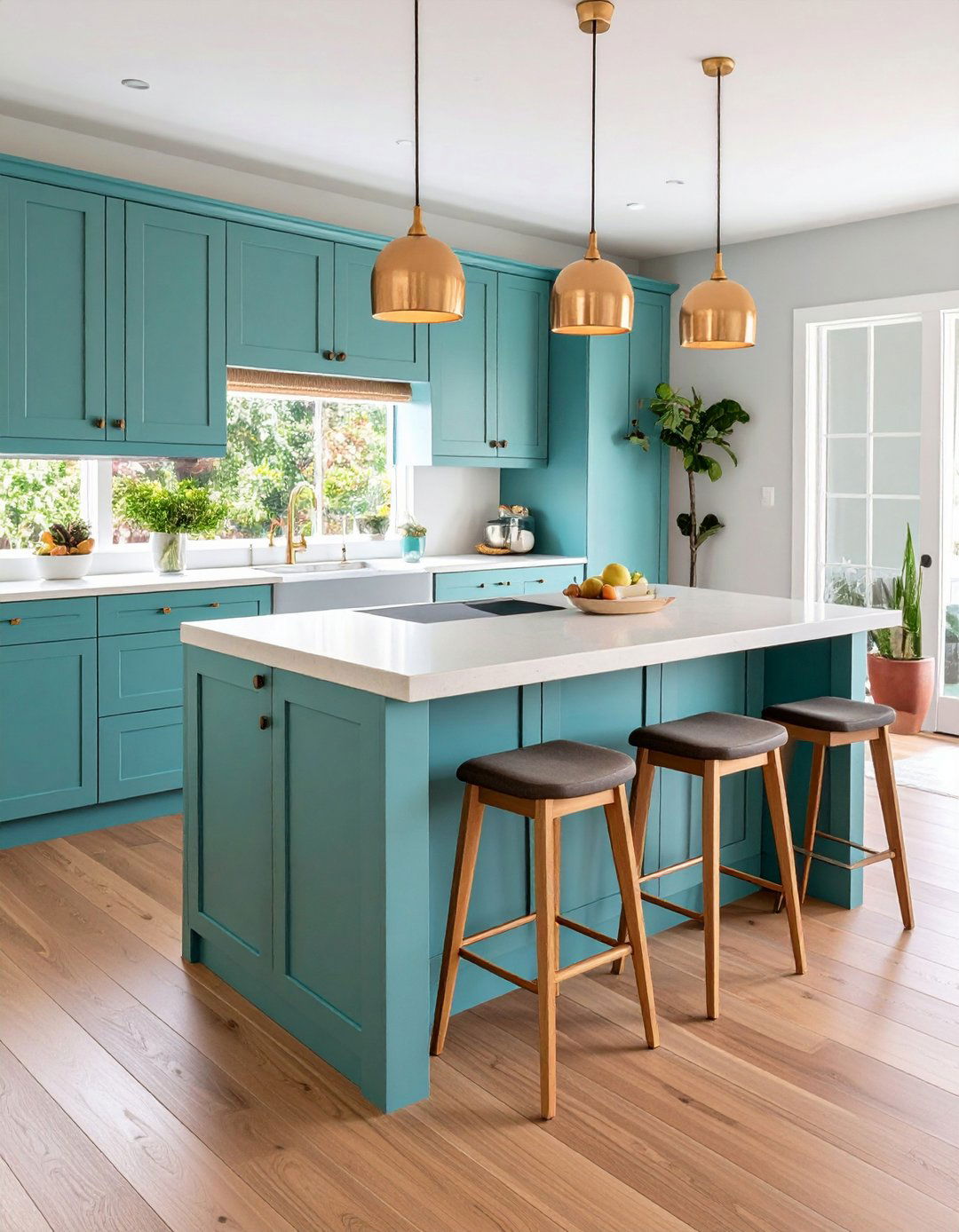
When a full island isn’t possible, extend the end of a run of cabinets to create a peninsula breakfast bar that naturally divides cooking and living zones. Leave at least 1.1 m clearance on three sides so helpers can pass even while stools are occupied. Finish the underside in the same paint as base units for cohesion, then add decorative end panels facing the lounge to disguise cabinet backs. Under-bar electric outlets keep phones topped up without trailing cables across countertops. Swap bulky high stools for back-less versions that slide away and preserve walkway width.
7. Storage-Rich Breakfast Bar with Hidden Drawers
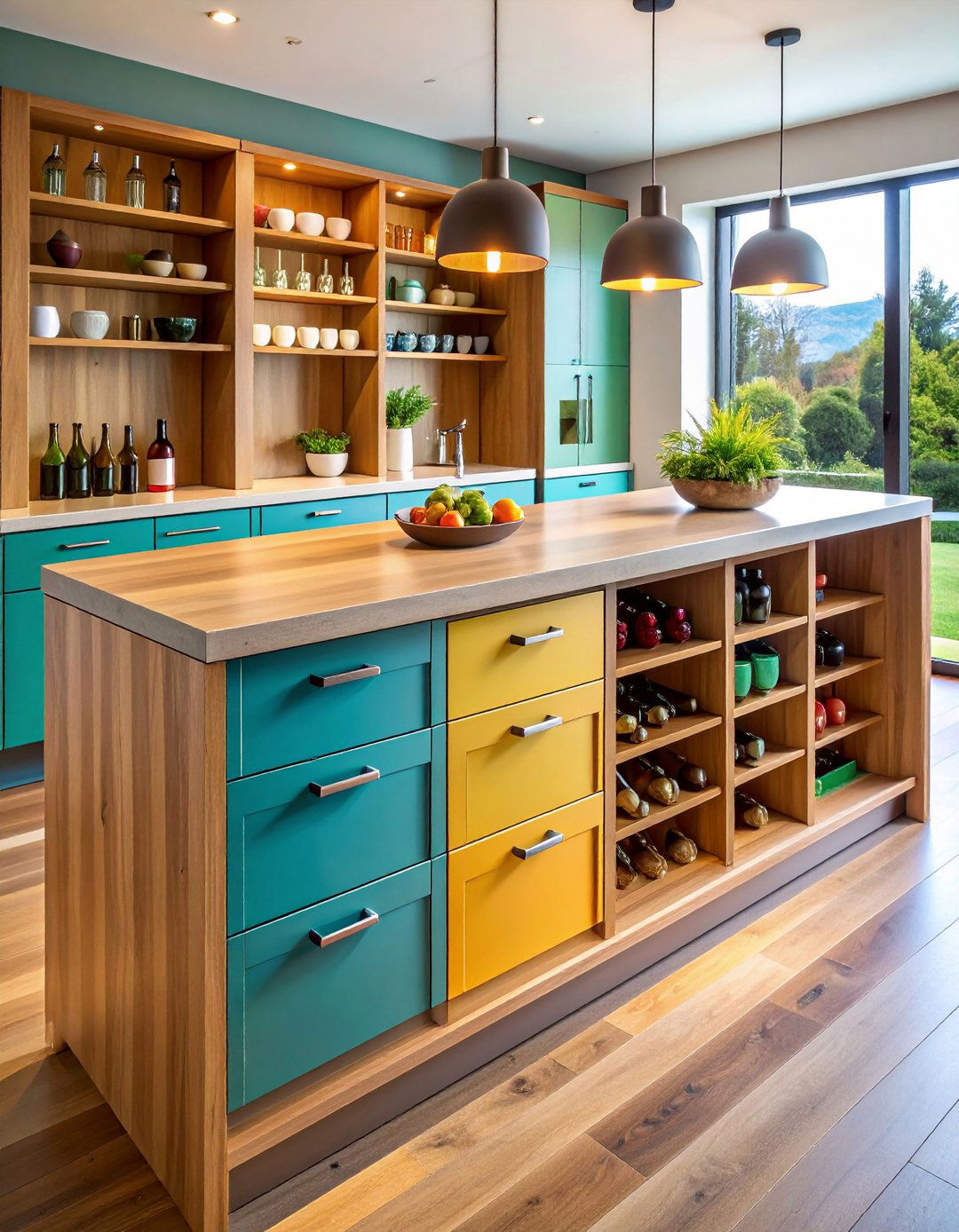
Clutter quickly undermines a tidy breakfast bar, so designers now hide utensil trays and napkins in slim drawers built into the bar’s fascia. Use push-latch hardware instead of pulls to maintain a sleek profile. Tiered pull-outs can house placemats, chargers, and even dog treats, meaning the bar becomes the morning command center. Soft-close runners minimize noise during pre-dawn coffee prep, and dividers stop contents clashing when slammed shut. Combine drawers with an end-panel wine rack if adult entertaining is also on the agenda, giving every inch of under-counter real estate a purpose.
8. Tech-Integrated Breakfast Bar with Charging Station

In gadget-heavy households, a breakfast bar fitted with wireless pads and USB-C ports keeps devices alive while pancakes flip. Look for ready-made cabinets featuring Qi chargers hidden under scratch-resistant wood tops; an LED halo glows when connection is live. RGB lighting strips set to warm white at dawn and cooler midday hues help circadian rhythm, and motion sensors illuminate the toe-kick for late-night snack runs. Ensure power outlets have built-in surge protection, and route cables through grommets so spills never meet electrics. Finish with easy-wipe lacquer so sticky fingers wipe away in seconds.
9. Window-View Breakfast Bar Serenity
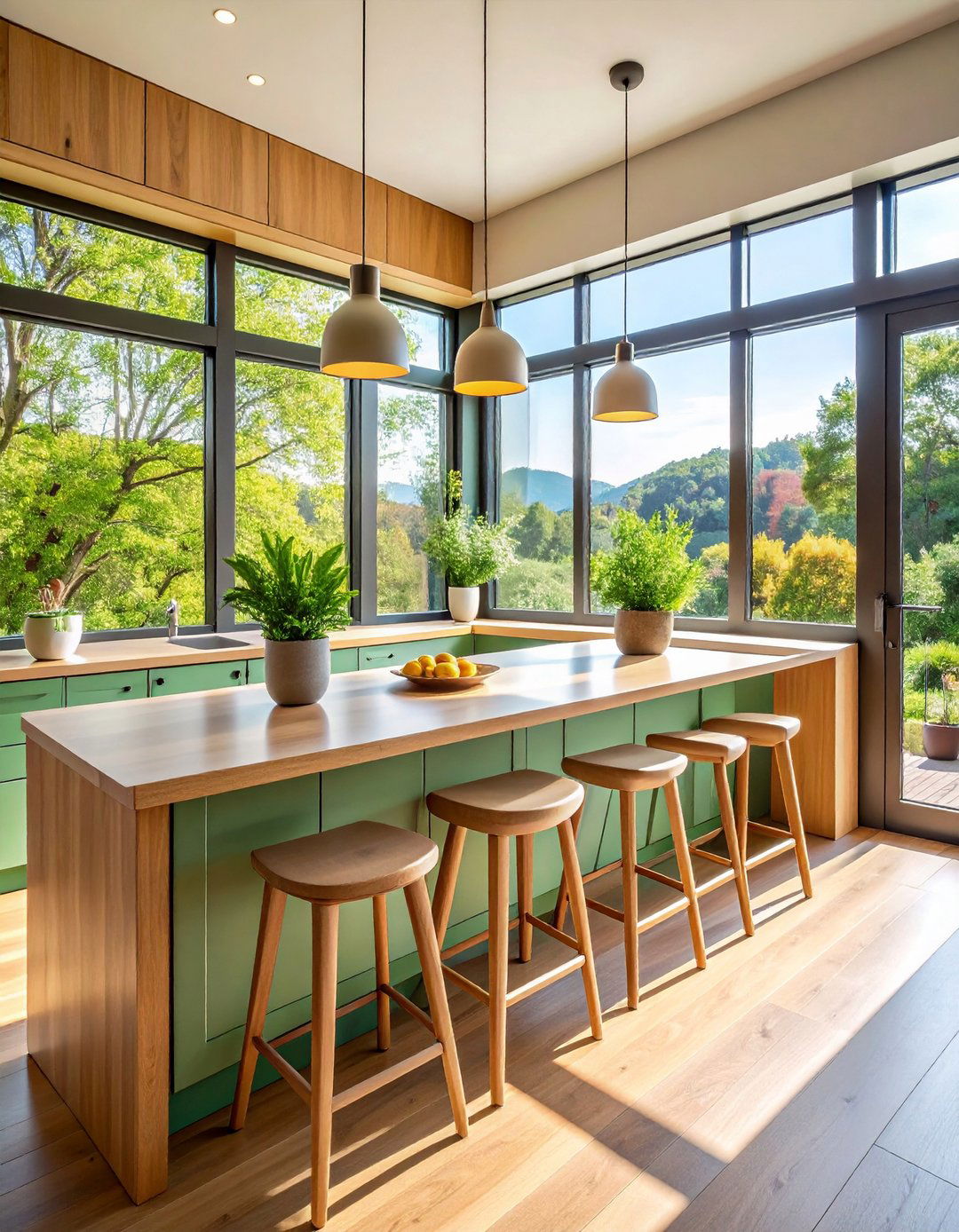
Positioning a breakfast bar under a picture window bathes the surface in uplifting natural light and can make modest kitchens feel expansive. Extend the countertop into the sill line for seamless integration, and specify shallow drawers beneath so knees clear comfortably. Coastal or city views become instant artwork, so keep décor minimal—perhaps a single herb pot or ceramic pour-over stand. Mount a narrow shelf just above eye level for mugs and keep window treatments simple café-style to avoid bumping heads. High-backed stools ensure loungers remain supported during lengthy Sunday brunches.
10. Weather-Proof Outdoor Breakfast Bar
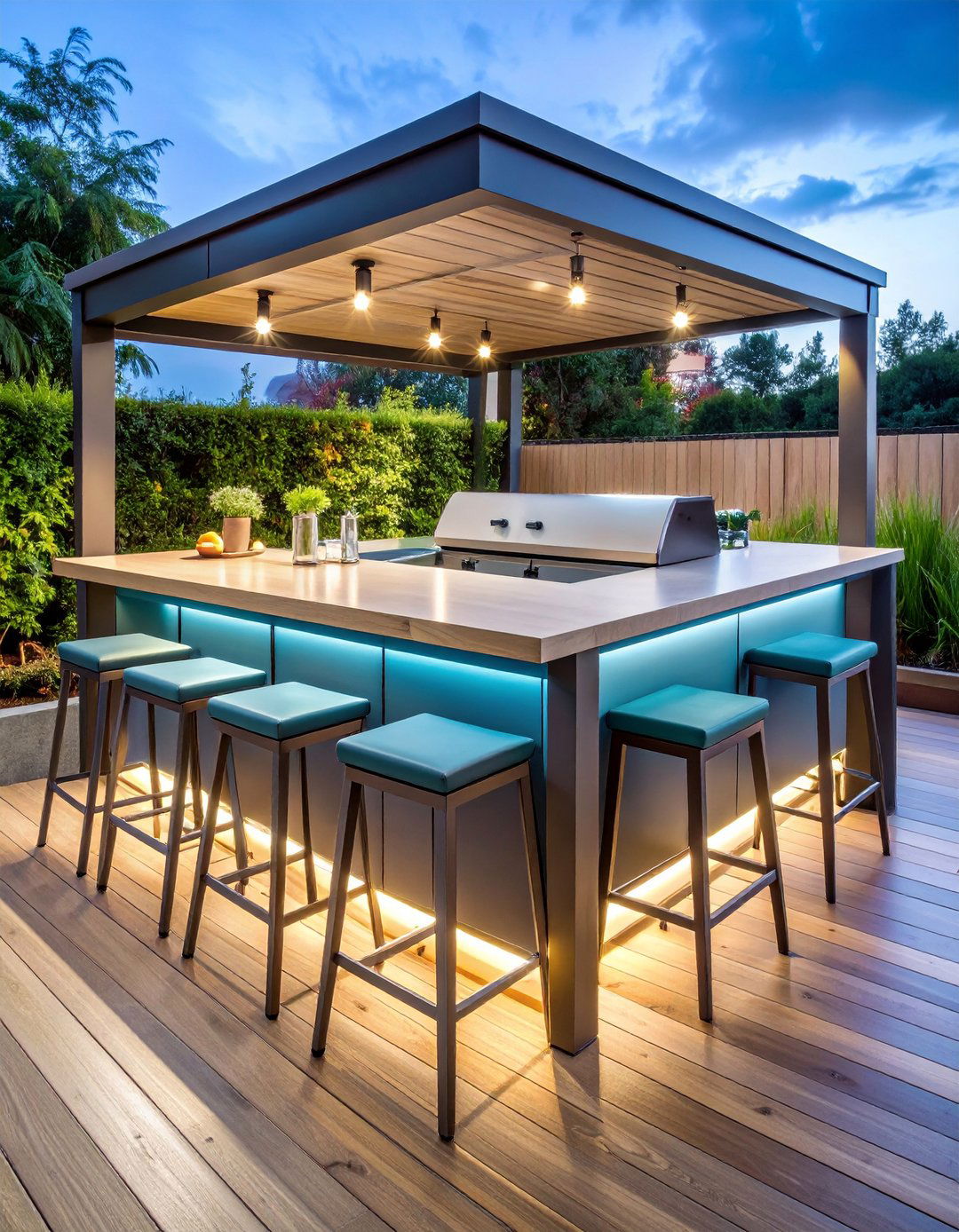
Al-fresco cooking is booming, and a breakfast bar beside the grill turns barbecues into all-day gatherings. Choose UV-stable composite decking or porcelain slabs for the counter so sun and sauce don’t leave marks. Modular steel frames let you reconfigure seating in minutes, while integrated refrigerator drawers keep juices chilled outside. Add dimmable LED strip lights under the lip for twilight ambience, and include a pergola or cantilever umbrella to shield diners at noon. Opt for easy-drain slatted stools to shed rainwater and store cushions in a waterproof box when storms loom.
11. Mobile Cart Breakfast Bar Flexibility
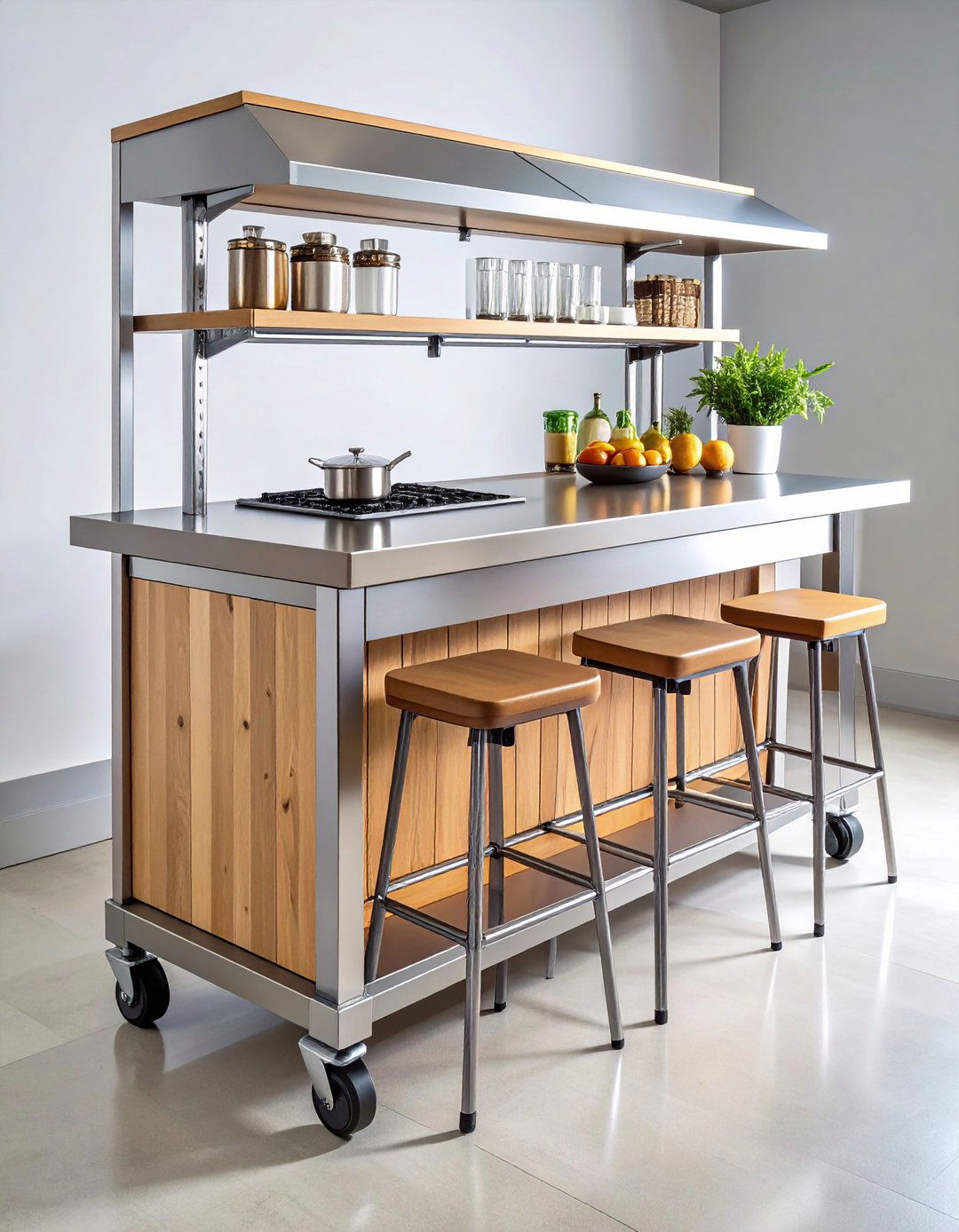
A rolling island on lockable casters doubles as a breakfast bar and expands prep real estate only when needed. At roughly 120 × 60 cm, it tucks against a wall after meals. Add a fold-up drop leaf to one side for extra elbow room, and stash stackable stools on a lower shelf. Stainless tops thrive under hot pans, while butcher-block inserts suit bread slicing. Secure wheels at opposite corners to stop wobble, and include side rails for tea towels. When holiday crowds descend, simply wheel the cart into the dining area as a drink station.
12. Banquette-Seating Breakfast Bar Nook
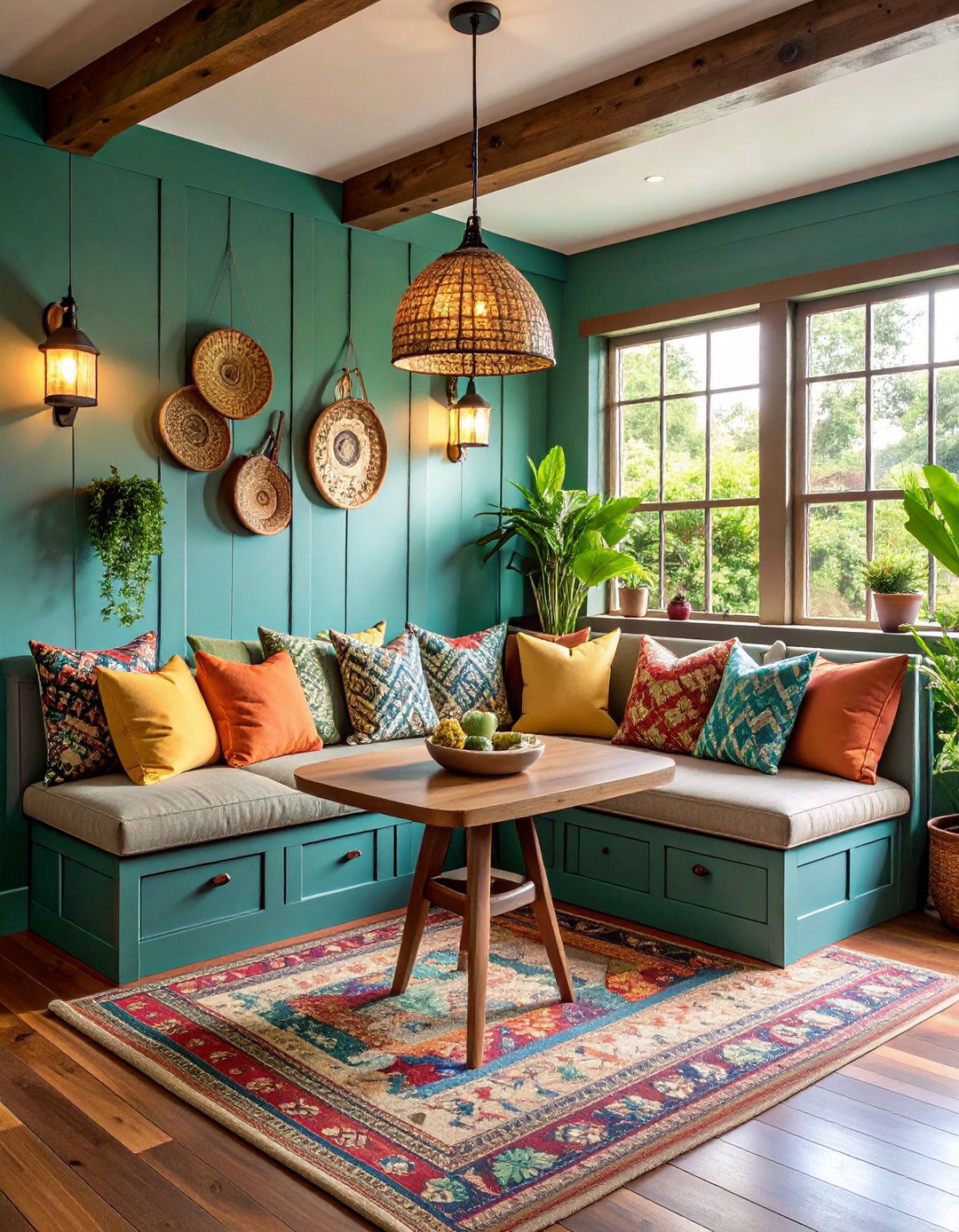
Swap stools for an upholstered banquette wrapping around a peninsula breakfast bar to maximize seating in awkward corners. Deep, cushioned benches invite family to linger, and under-seat drawers swallow placemats or board games. A surfboard-shaped table softens traffic flow and avoids bruised hips. Upholster in performance fabric that wipes clean and add patterned pillows for personality. Strategically placed sconces mimic café mood lighting and delineate the nook from main prep zones, reducing cross-traffic during cooking.
13. Fold-Out Swivel Breakfast Bar Extension
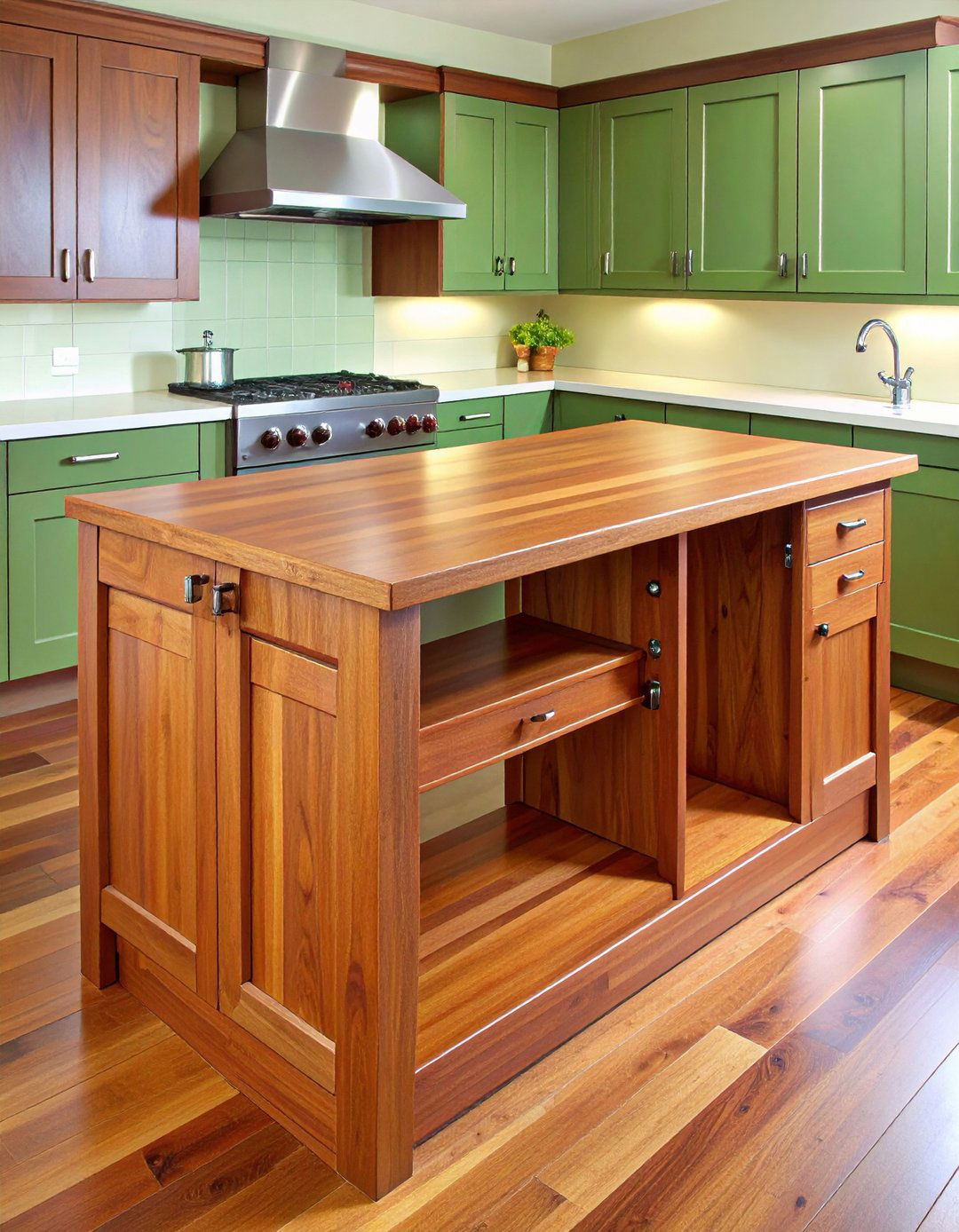
Unlike classic drop leaves, a swivel-out breakfast bar pivots 90° from under the countertop, giving you an instant extra seat or two when friends pop by. Heavy-duty lazy-Susan hardware handles the cantilevered weight, and the surface nests back beneath the counter when not in use. Edge-band both top and underside so the extension looks finished in either position. This mechanism works particularly well on galley islands where aisle width limits permanent overhangs. Keep thickness to 25 mm so it remains light enough to deploy one-handed.
14. Pendant-Lit Breakfast Bar Drama
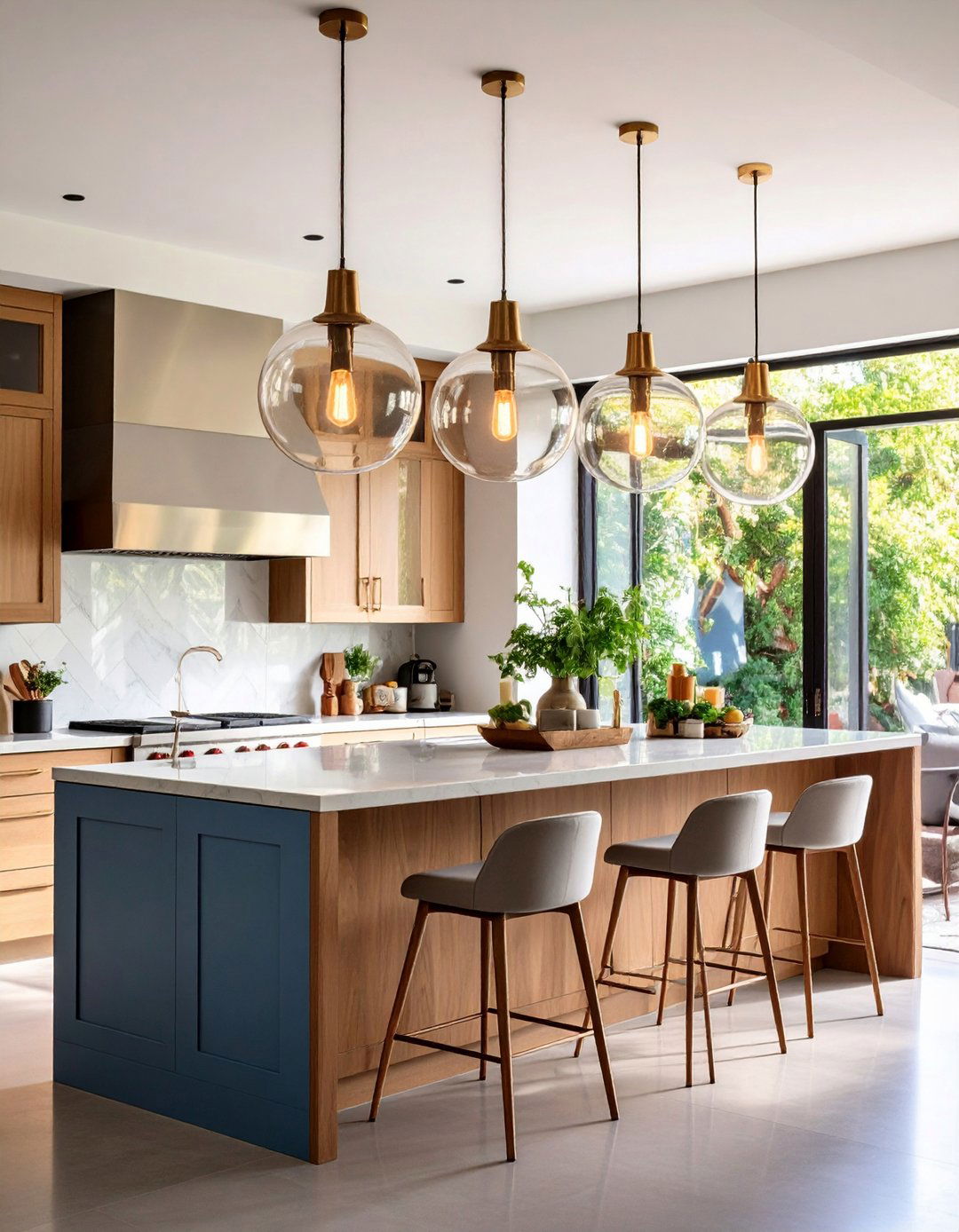
Lighting can transform the simplest breakfast bar into a focal point. Cluster two or three pendants roughly 65 cm above the surface to avoid head knocks yet provide glare-free illumination. Choose domed shades for downward focus or clear glass globes if you want ambient glow. Dimming capability matters: bright for chopping, low for evening wine. Line fittings with the stool centers for symmetry, and use warm 2700-Kelvin bulbs to flatter skin tones at dawn. Cord colors that echo cabinet hardware tie the scheme together and make fixtures feel considered, not tacked on.
15. Kid-Friendly Breakfast Bar Setup
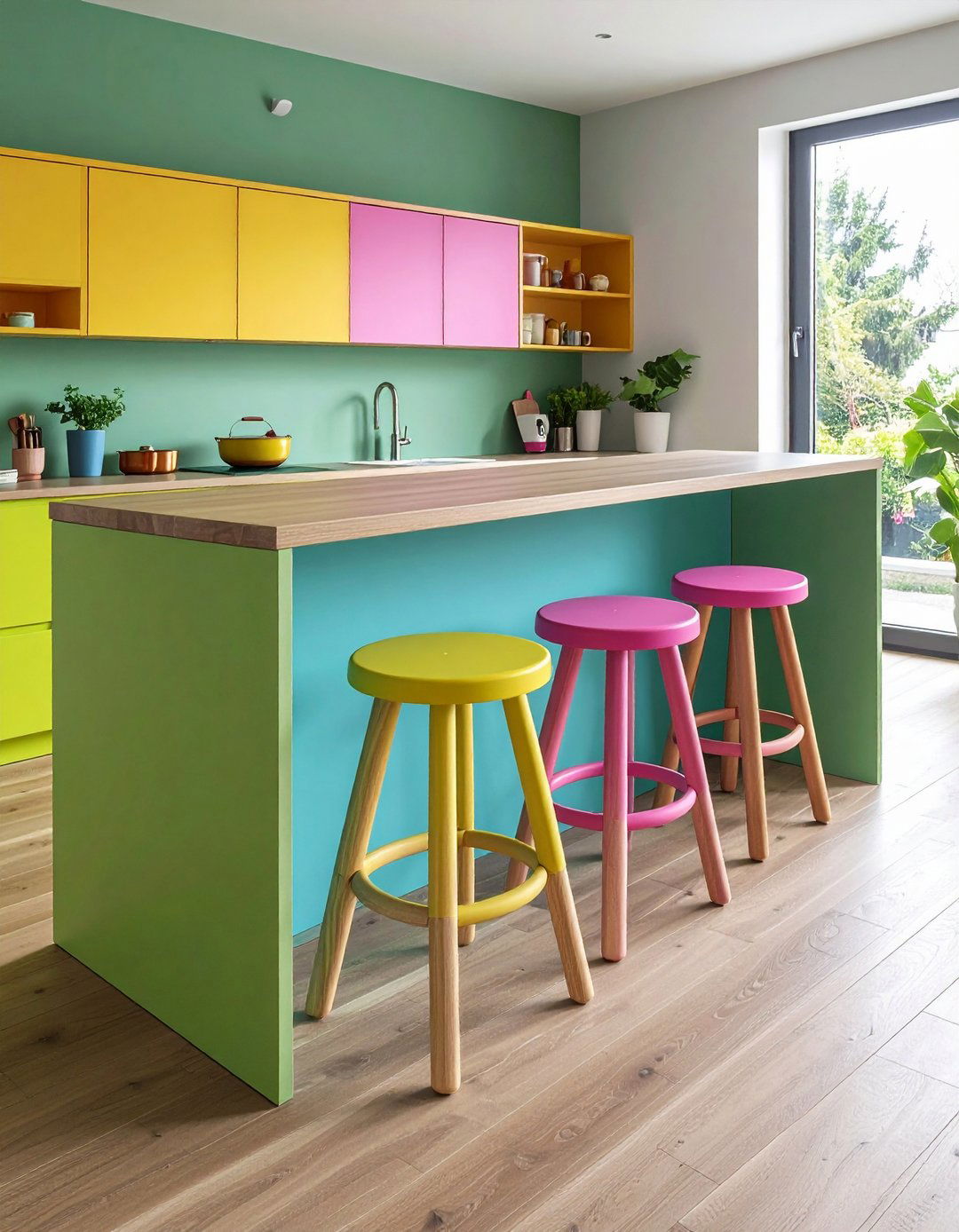
Design a breakfast bar younger diners can actually reach by introducing one lowered segment (around 75 cm high) beside the standard 90 cm counter. Rounded corners and wipe-clean laminate surfaces keep bumps and stains at bay, while high-backed stools with footrests support growing spines. Store bowls and cereal boxes in shallow drawers beneath so children can serve themselves, building independence. Magnetic chalkboard paint on side panels lets them doodle while adults cook, and removable silicone placemats ease clean-up.
16. Scandinavian Minimalist Breakfast Bar Calm

A pale timber breakfast bar set against white cabinetry embodies Scandi restraint. Keep lines unbroken: flat-panel fronts, integrated pulls, and neutral hues. Contrast subtle textures—birch wood grains, honed marble veining—and let natural light wash the scene. Choose spindle-back stools in beech or ash, and drape a sheepskin for hygge warmth. Slimline LED strips under wall units provide task light without visual bulk. The result is a clutter-free anchor that invites quiet coffee rituals while still cheering dark winters with its airy brightness.
17. Work-From-Home Breakfast Bar

Many of us now flip laptops open at the breakfast bar, so incorporate ergonomic touches: a discreet pop-up outlet with AC and USB-C, under-counter hooks for headphones, and a felt-lined drawer hiding stationery. Adjustable stools with lumbar support ease longer sessions, and a matte surface finish cuts screen glare. During meal prep, stash tech in a charging cubby behind a tambour door to keep crumbs at bay. Soft pin-up strips on a rear splashback hold reminders without cluttering the surface.
18. Fluted-Front Breakfast Bar Texture
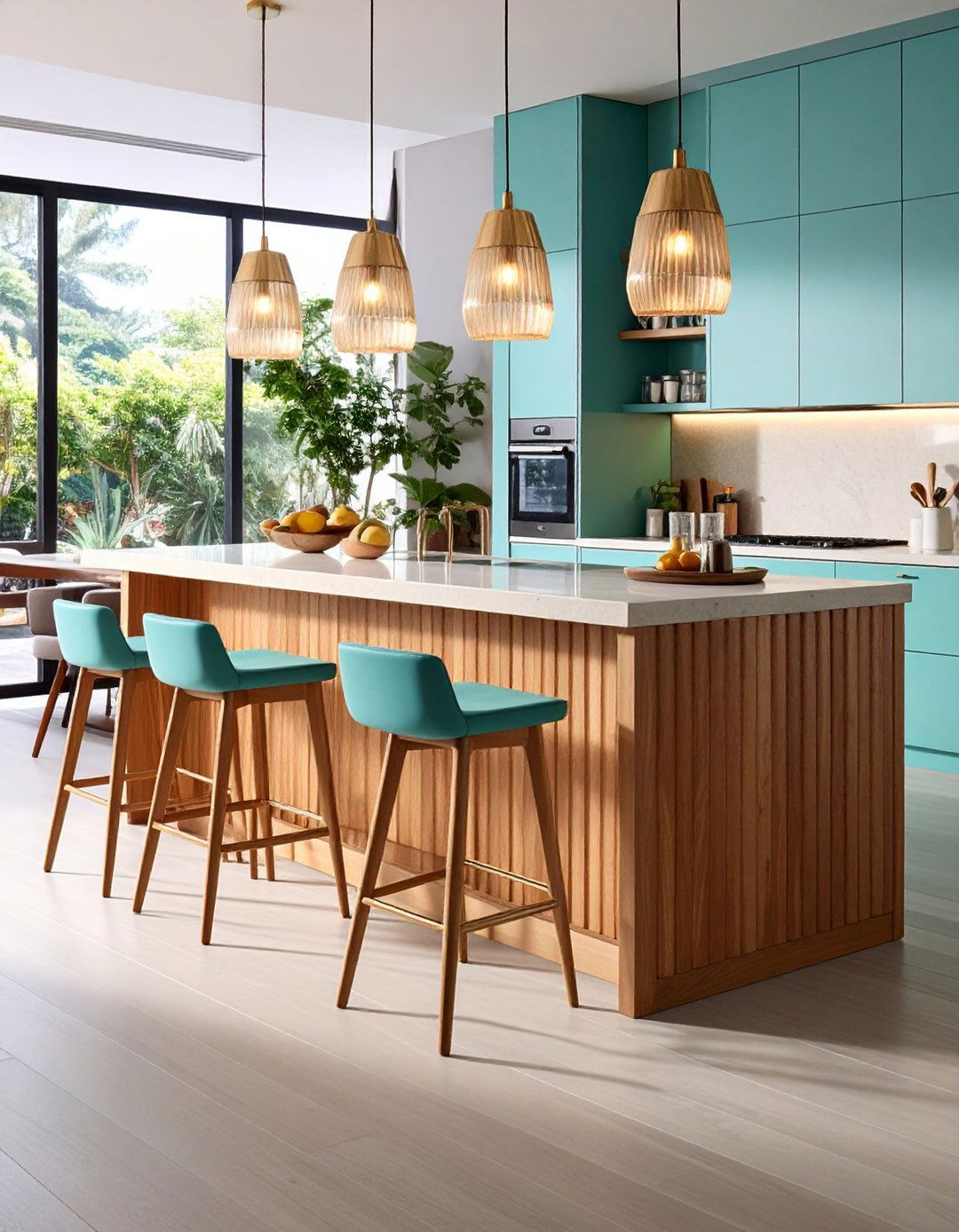
Fluted or reeded fronts catch light and add depth to otherwise flat breakfast-bar panels. Routed MDF or ribbed oak slats run vertically, making low units appear taller. Pair with a simple solid-surface top so the texture shines. Clear two-part lacquer guards the grooves from sauce splashes yet keeps grain visible. Complement the vertical rhythm with slim spindle stools or fluted glass pendants overhead. This subtle patterning feels timeless and masks minor scuffs—handy for high-traffic family kitchens.
19. Eco-Conscious Reclaimed Breakfast Bar
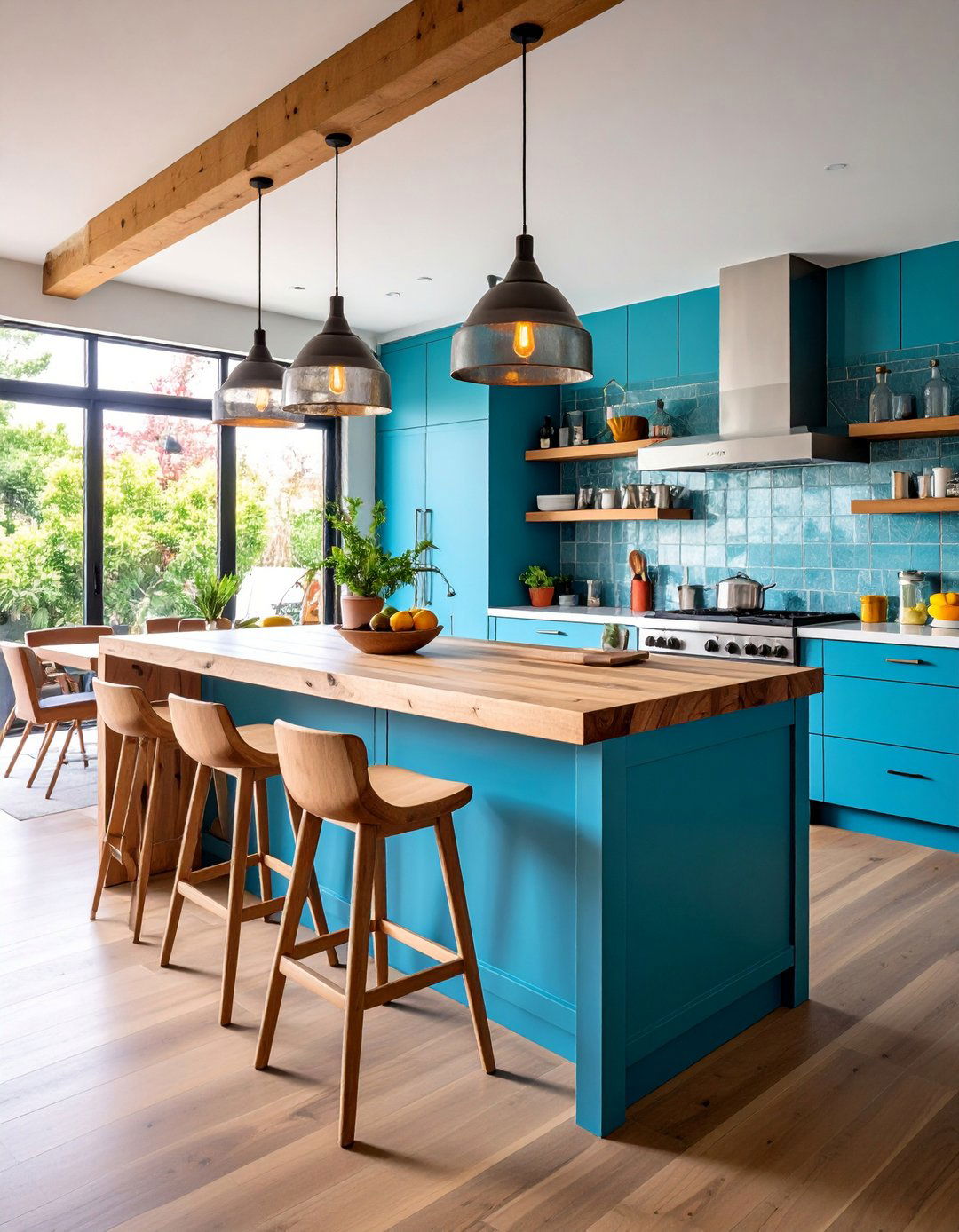
Sustainability can steer style: use salvaged timber beams planed smooth for a one-of-a-kind breakfast bar that keeps materials out of landfill. Combine with recycled-steel supports or bamboo stools. Low-VOC hard-wax oil preserves patina while protecting against spills. Designers emphasize that eco-friendly doesn’t mean rustic only—pair reclaimed wood with matte porcelain tiles or sleek induction plates for modern contrast. And by sourcing locally, you cut transport emissions along with cost.
20. Single-Level Versus Split-Level Breakfast Bar
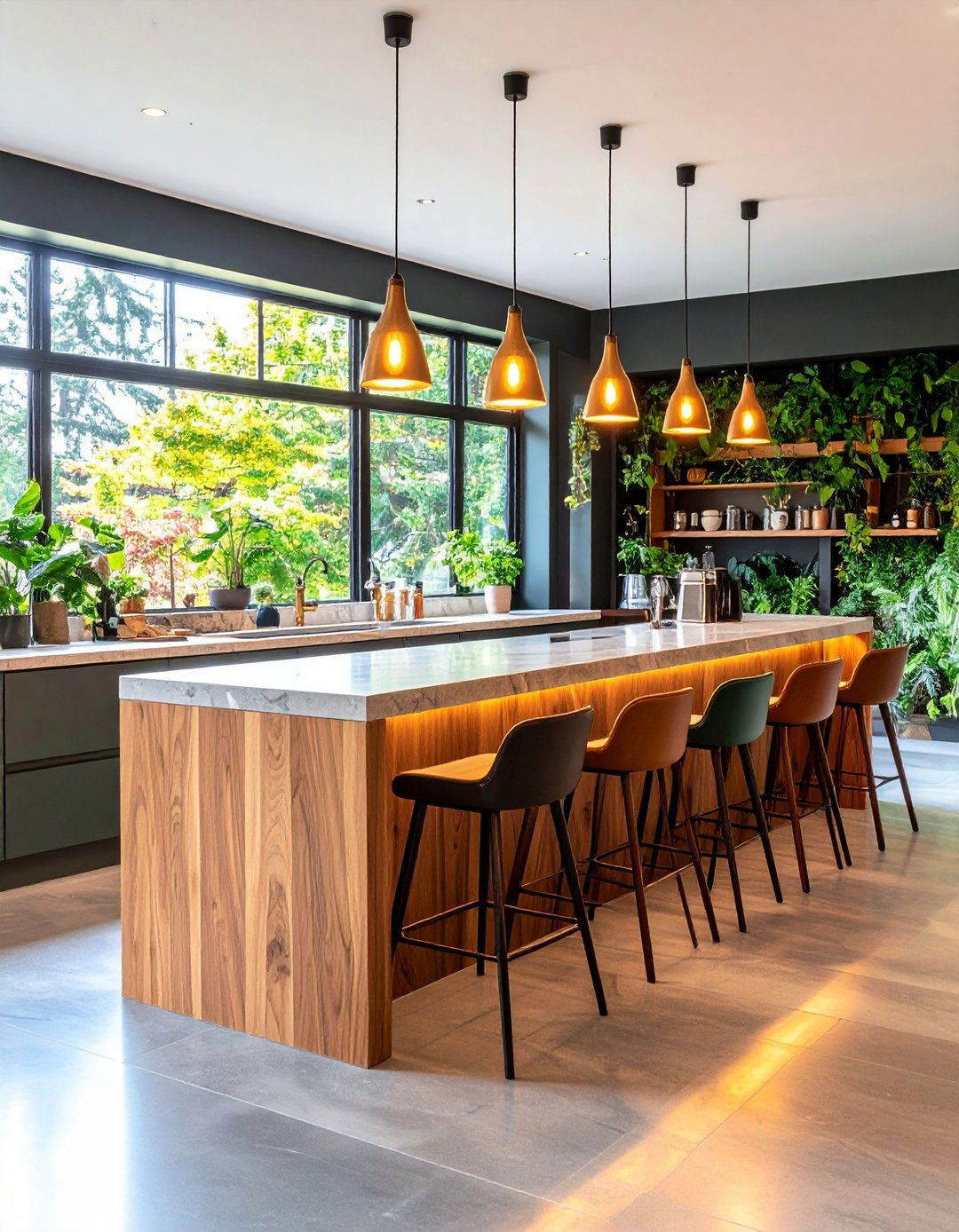
Tiered breakfast bars once separated prep and dining, but designers now caution that multi-level islands can feel fussy and shrink usable surface area. Instead, create visual zoning with contrasting stools, panel colors, or a slim raised ledge only 3 cm high—enough to hide crumbs from guests without adding bulk. Keeping the main top continuous improves sightlines and supports flexible use, from cookie-rolling to group projects. If you crave dimension, drop—not lift—a narrow oak breadboard strip flush with the counter for easy serving without the dated “step-up” look.
Conclusion:
From waterfall edges that scream modern luxury to fold-downs that vanish on demand, today’s breakfast bar ideas prove one strategy fits any space: blend purpose with personality. Layering smart storage, thoughtful lighting, and tactile finishes turns the humble breakfast bar into a 24-hour stage for fueling bodies, creating memories, and even hitting work deadlines. Whether you lean rustic, Scandi, industrial, or high-tech, the key is a comfortable seat, a durable surface, and design flourishes that make you smile before sunrise. Carry these insights forward, adapt them to your square footage, and let your new breakfast bar become the inviting heartbeat of home.


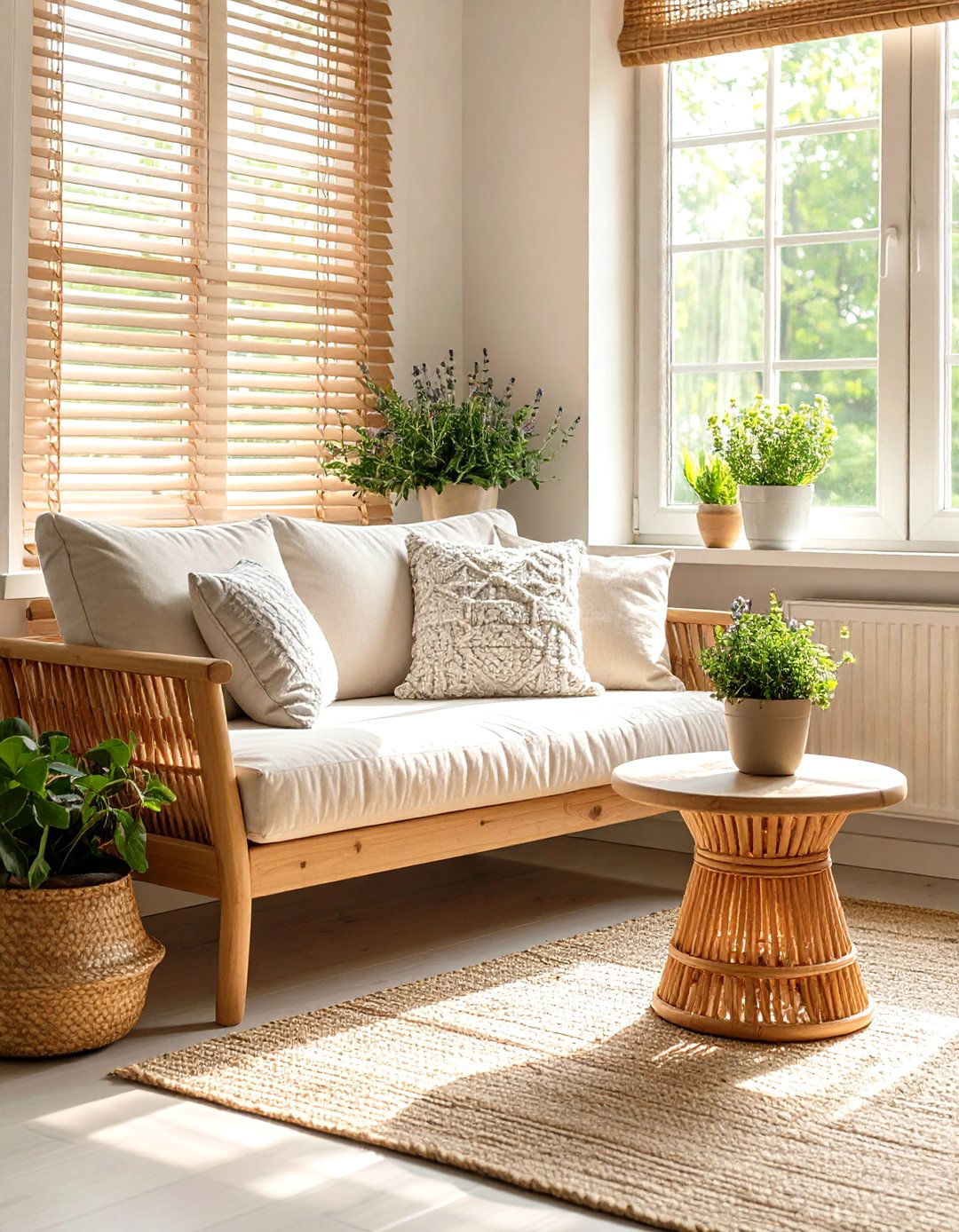
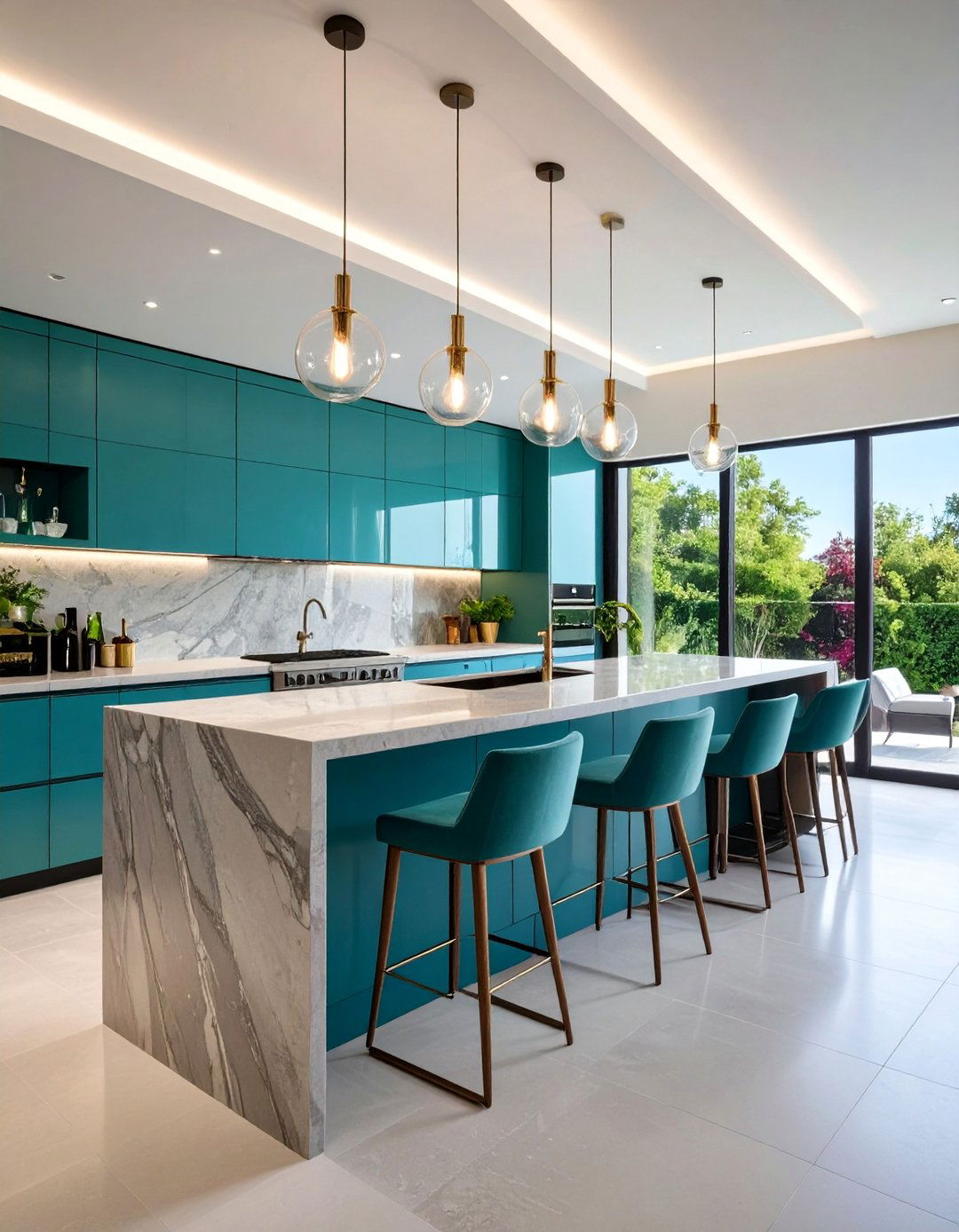

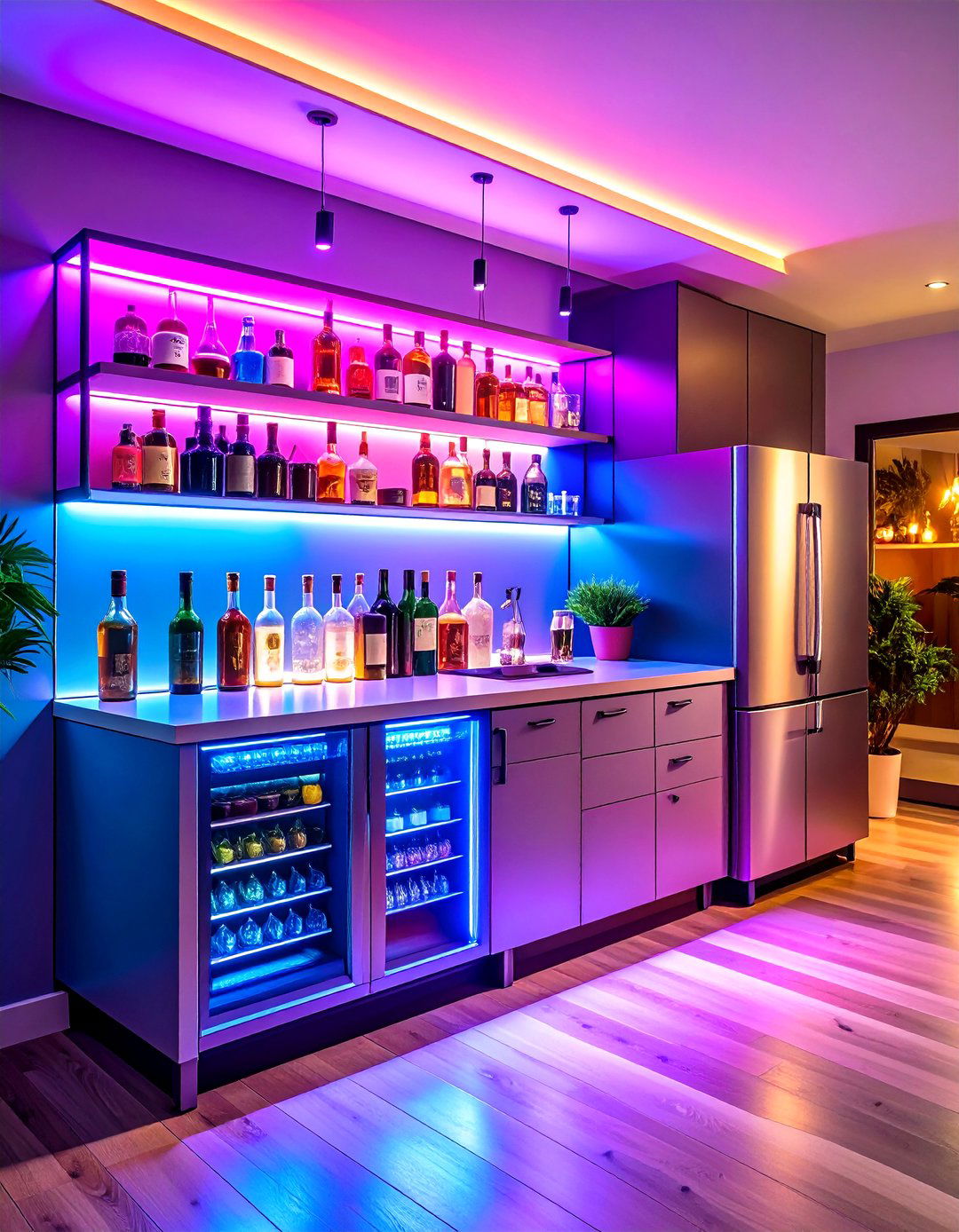
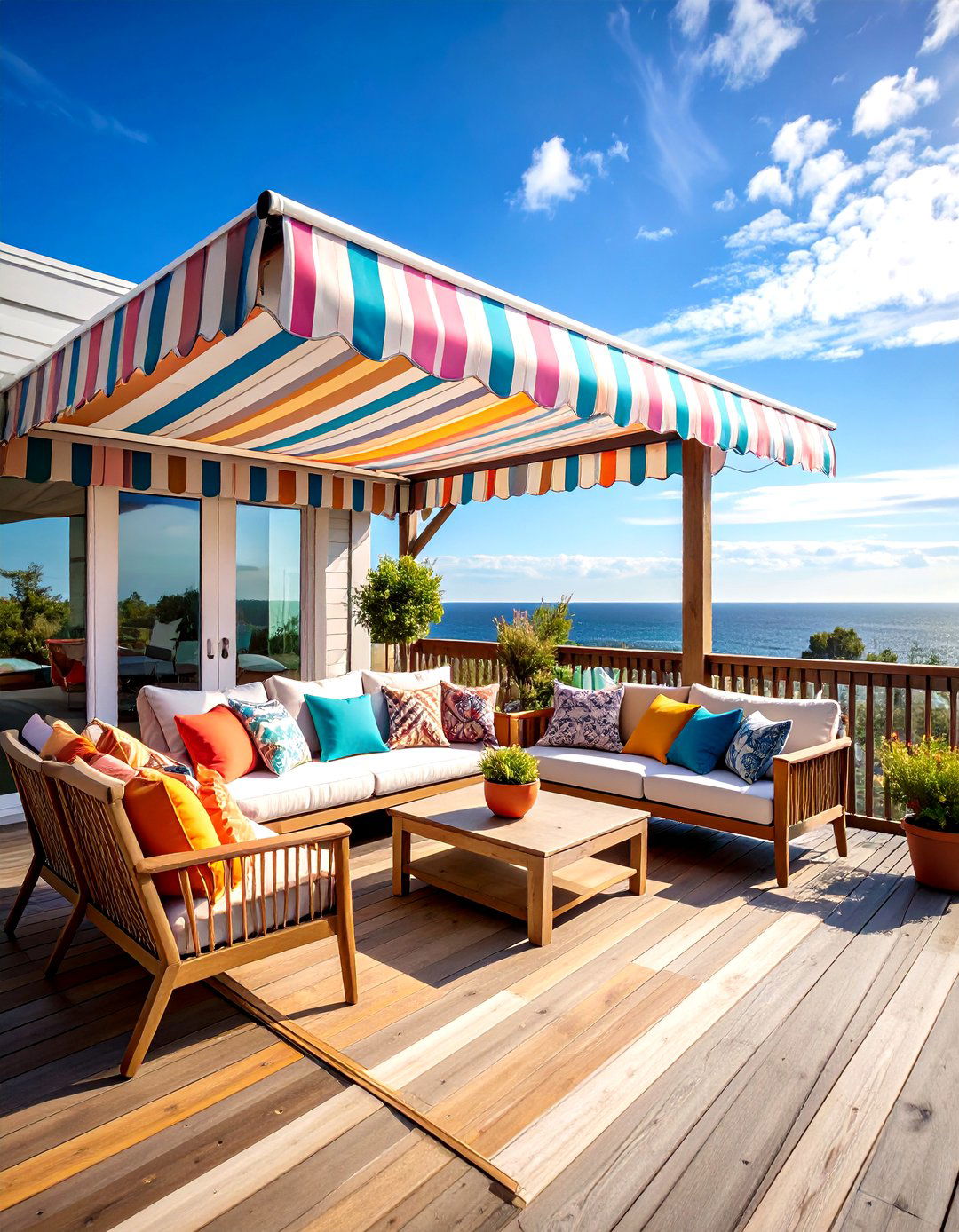
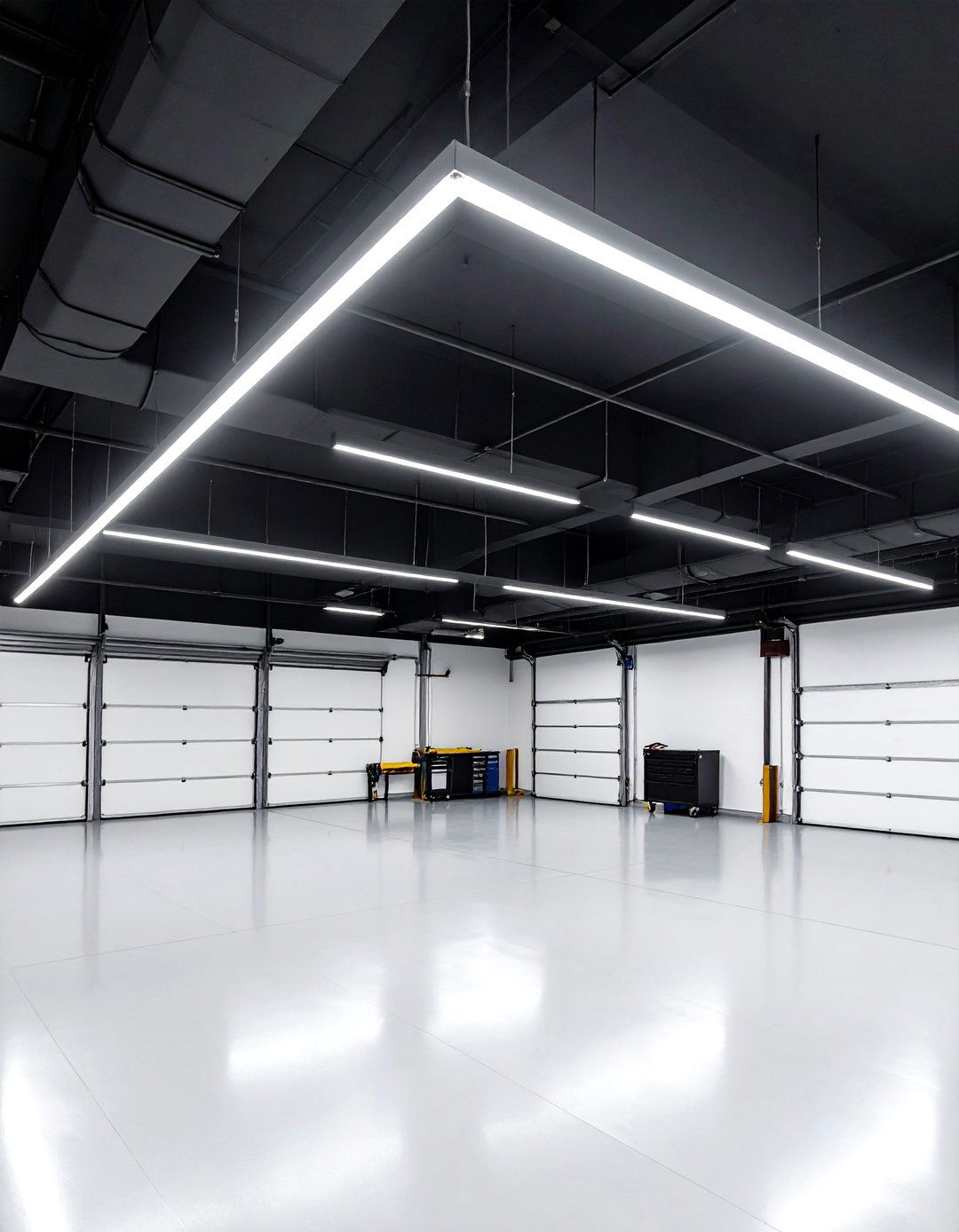
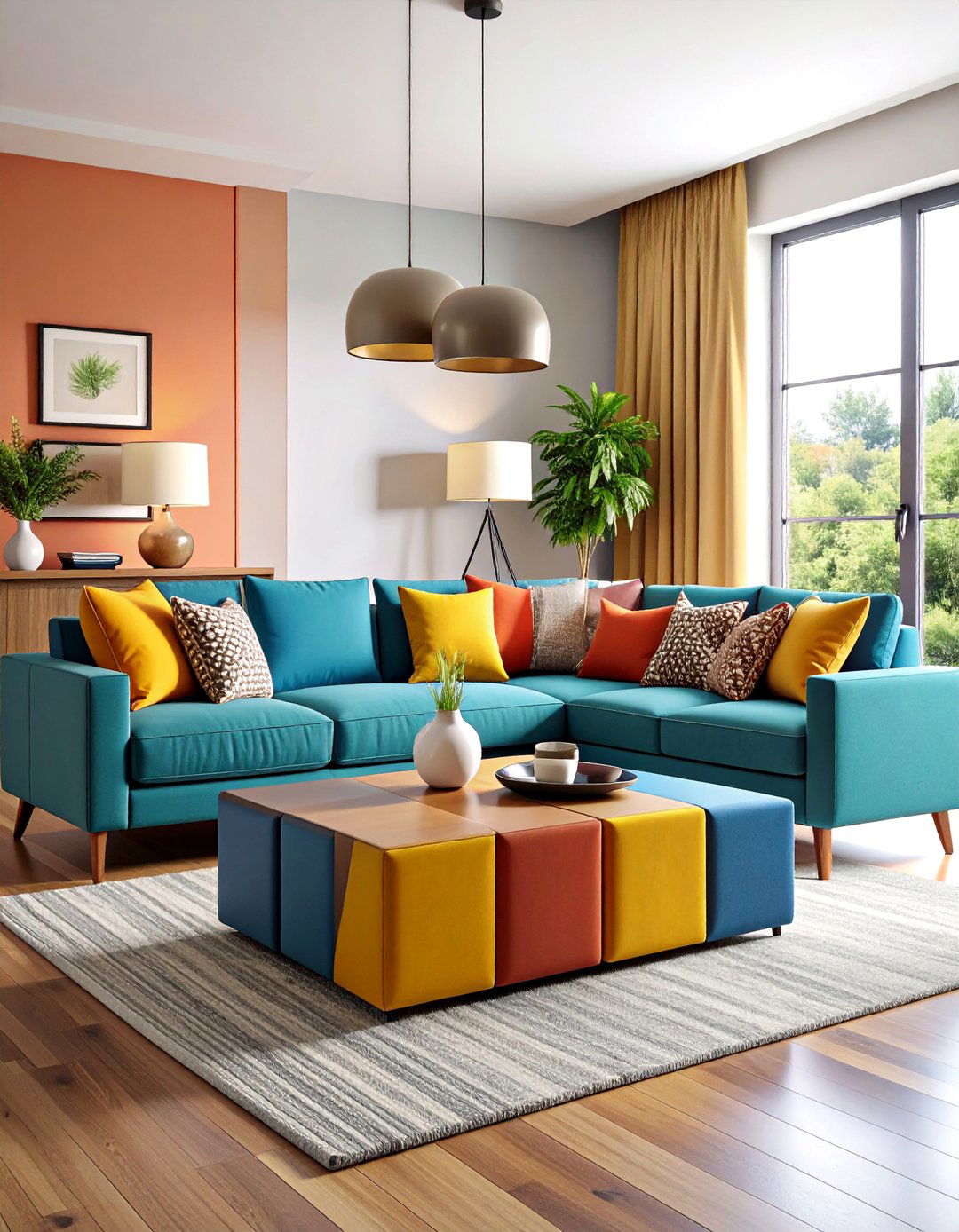
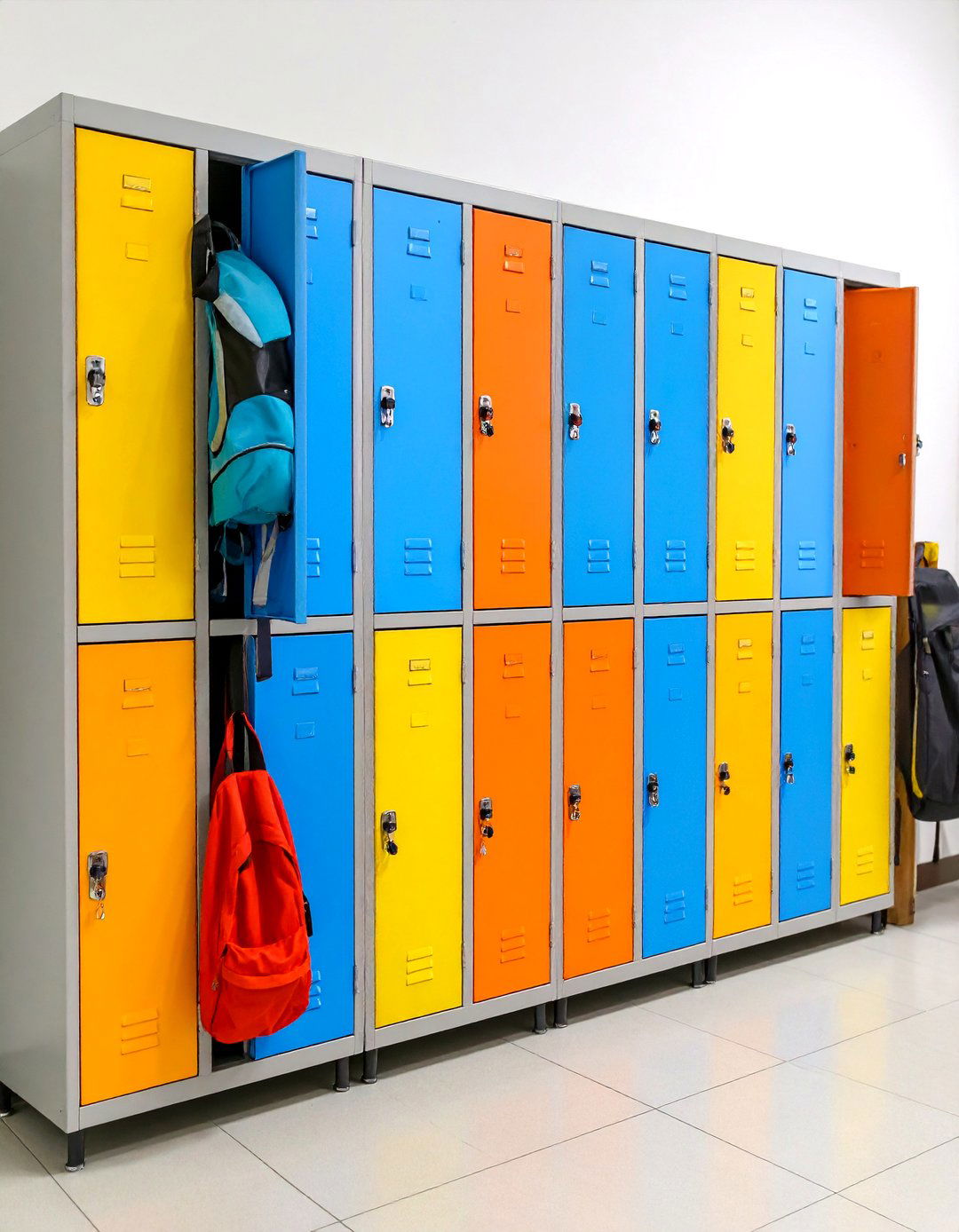
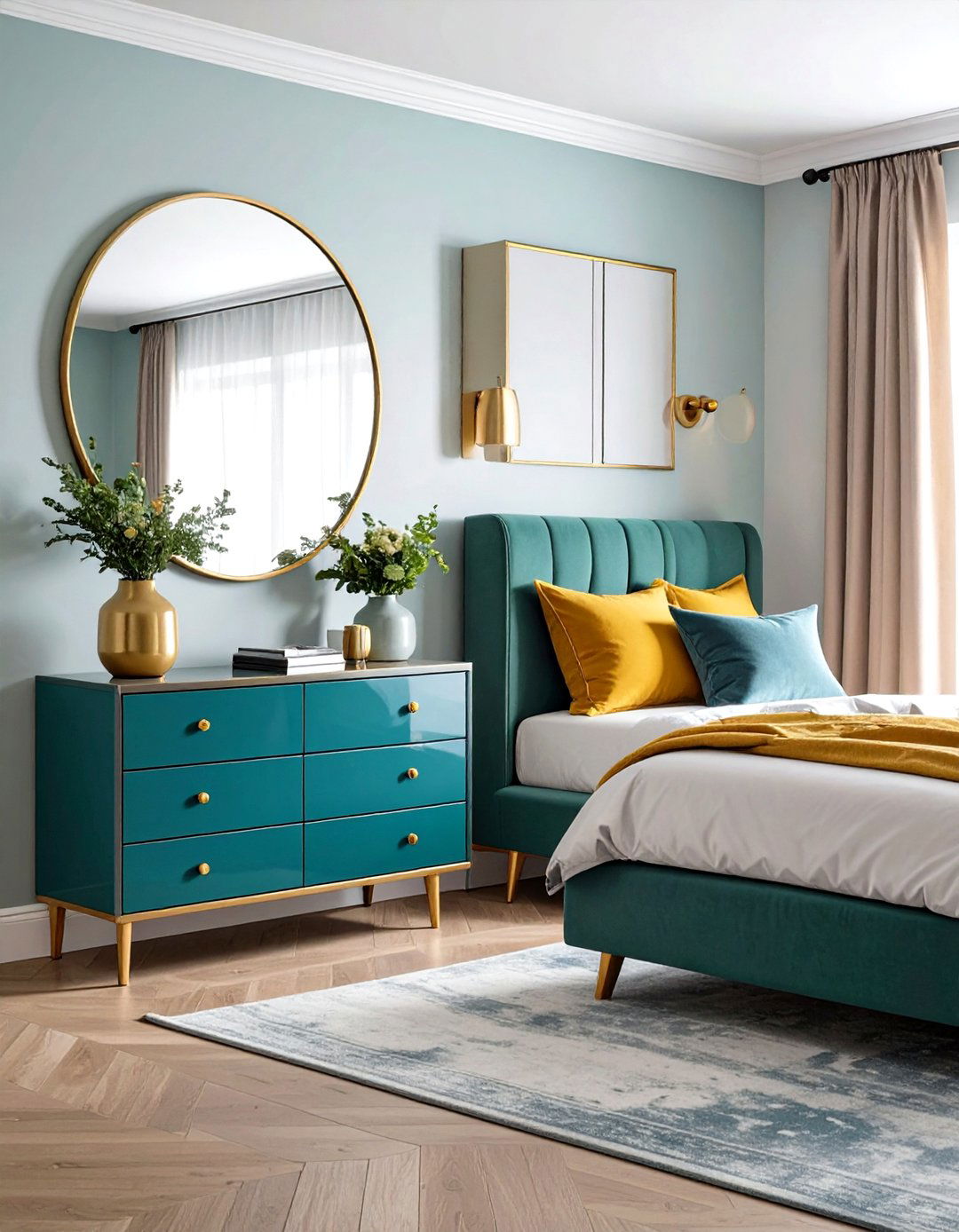
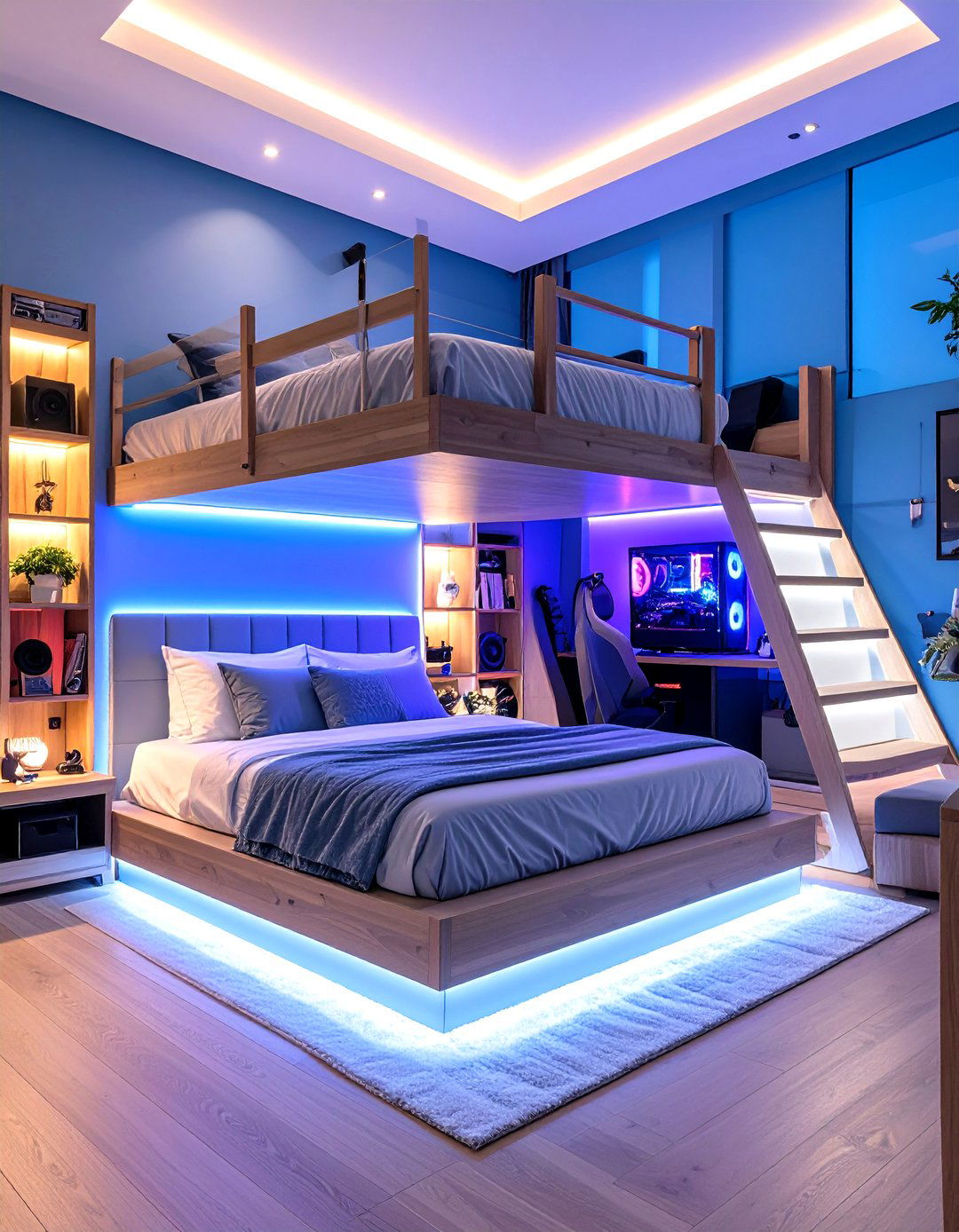
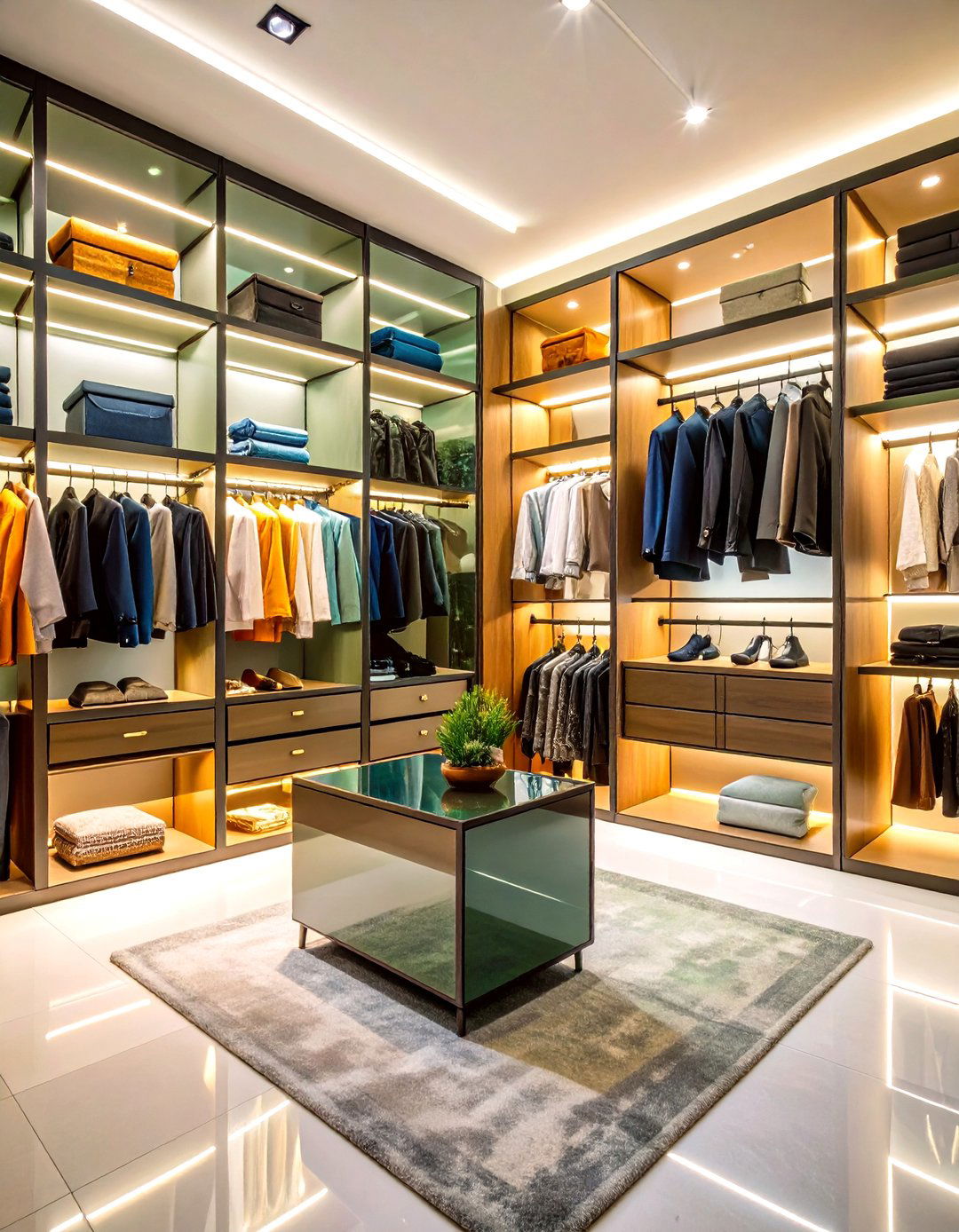
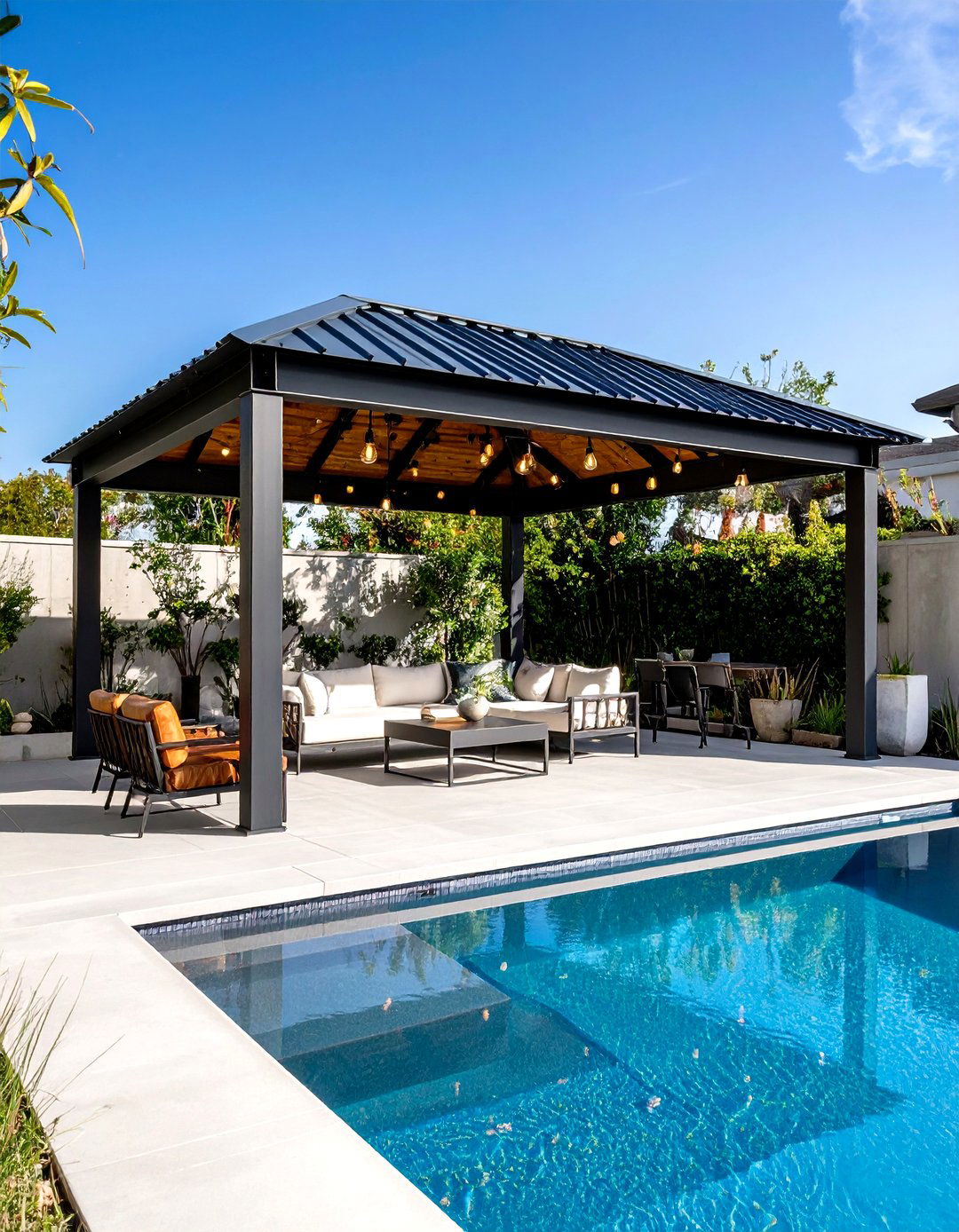


Leave a Reply